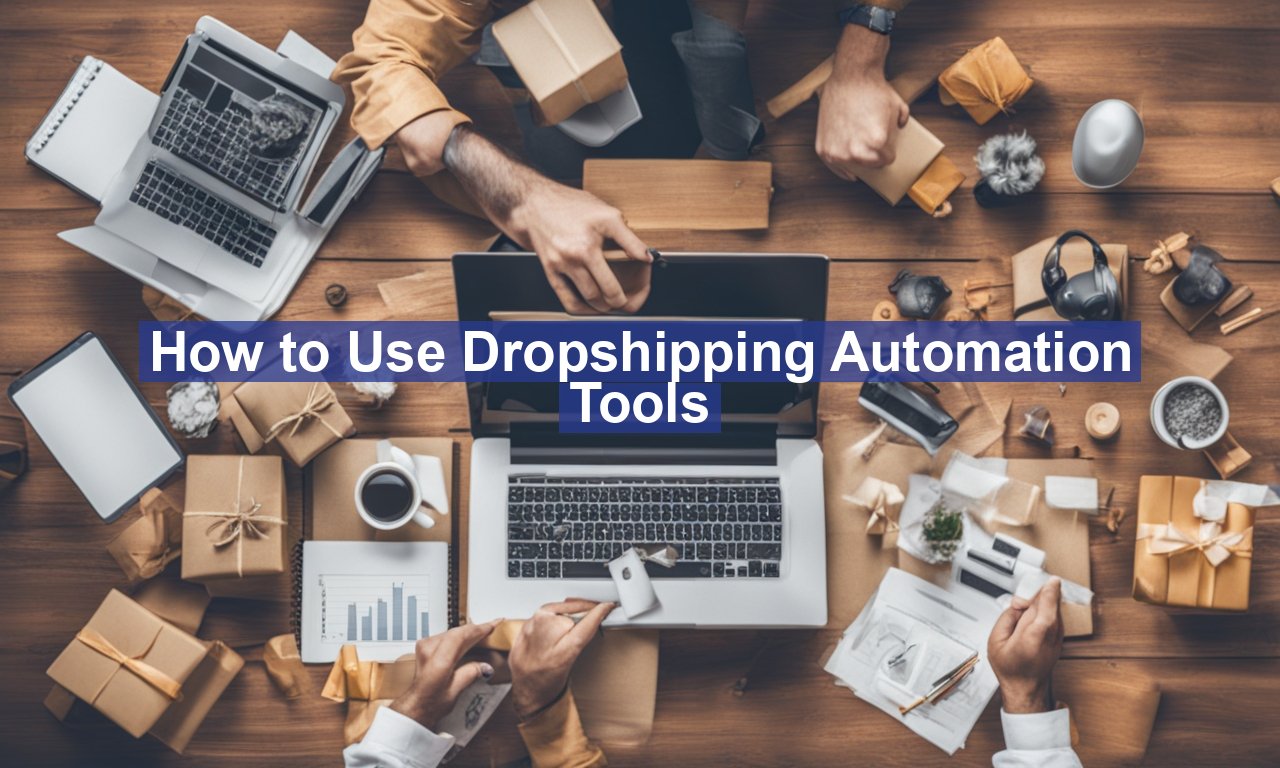How to use Dropshipping automation tools Imagine running an e-commerce store where products are stocked, packaged, and shipped to your customers without you ever touching them. Welcome to the world of dropshipping! While the concept sounds dream-like, managing all the aspects of a dropshipping business manually can be a daunting task. Fortunately, automation tools are here to revolutionize the way entrepreneurs handle their dropshipping operations.
In this article, we’ll dive deep into how automation tools work, their numerous benefits, and how you can leverage them to take your dropshipping business to the next level. Whether you’re a seasoned pro or a budding entrepreneur, this is your roadmap to streamlining your operations and potentially boosting your profits.
The Role of How to Use Dropshipping Automation Tools
How to use Dropshipping automation tools are essentially software solutions designed to streamline the various processes involved in running an online store with a dropshipping business model. They take over repetitive tasks, minimizing human error and significantly saving time. But what exact roles do they play?
- Inventory Management: Automation tools help in keeping track of product stock levels in real-time, ensuring that you never sell a product that’s not available.
- Order Processing: These tools automatically handle order placements with suppliers, reducing the time between order receipts and dispatch.
- Price Updates: They adjust prices across platforms based on costs and desired profit margins, keeping pricing competitive.
With these capabilities, automation tools act as the backbone of a successful dropshipping business, allowing entrepreneurs to focus on strategic tasks like marketing and customer engagement.
Key Benefits of Dropshipping Automation Tools
Why should you invest your time and money in dropshipping automation tools? Let’s explore the primary benefits they offer:
Improved Efficiency
Gone are the days when you manually updated product listings or spent hours processing orders. Automation tools perform these tasks almost instantaneously, freeing up time and resources for more pressing matters.
Enhanced Accuracy
Human errors can lead to unhappy customers and lost profits. Automated systems minimize these errors, ensuring accurate product descriptions, pricing, and stock levels.
Scalability
As your business grows, so does the complexity of managing it. Automation tools are built to handle scale, efficiently managing an increased number of orders and product listings without a hitch.
Choosing the Right Automation Tools
Not all automation tools are created equal, and selecting the right one for your dropshipping operations can be pivotal. Here are some steps to guide your decision:
Identify Your Needs
Assess which areas of your business would benefit most from automation. Do you struggle with inventory management, or do you need help with order processing?
Research and Compare
Look into various automation tools available on the market. Read reviews, comparisons, and case studies to gauge their suitability for your specific needs. Some popular options include Oberlo, Spocket, and DSM Tool. For more insights, you can explore resources like Forbes and Shopify.
Test the Tools
Most platforms offer free trials or demos. Utilize these opportunities to interact with the tools and understand their user interface and capabilities before making a financial commitment.
Integrating Automation Tools into Your Workflow
Once you’ve chosen the right tools, the next step is seamless integration into your existing workflow. Here’s how you can go about it:
Plan a Gradual Transition
Avoid overwhelming your operations with too many changes at once. Start by automating one or two processes, such as order management or inventory tracking, then gradually expand as you become more accustomed to the tools.
Train Your Team
Ensure that your team is well-versed in using these tools. Provide them with comprehensive training sessions to maximize the benefits of automation and ensure everyone is on the same page.
Monitor and Adjust
Automation is not a set-it-and-forget-it deal. Constantly monitor the performance of your automation tools and make necessary adjustments. If a tool fails to meet your expectations, be open to experimenting with alternatives.
Conclusion
With the advent of sophisticated how to use Dropshipping automation tools, running a successful e-commerce store has never been easier. These tools allow entrepreneurs to focus more on growth strategies rather than getting bogged down by mundane, repetitive tasks. By carefully selecting and effectively integrating the right tools into your workflow, you position your business for success and sustainability. Embrace automation and witness a seamless transformation in your dropshipping journey.
For those getting started, remember to explore resources, such as the wealth of information available on Entrepreneur, to ensure you are making informed decisions every step of the way.


